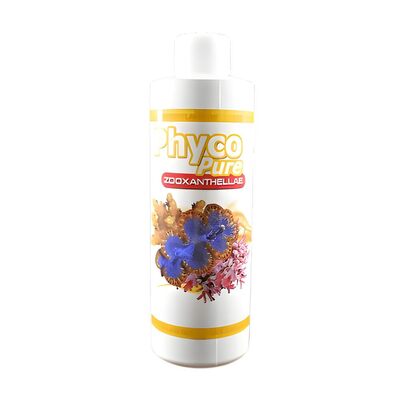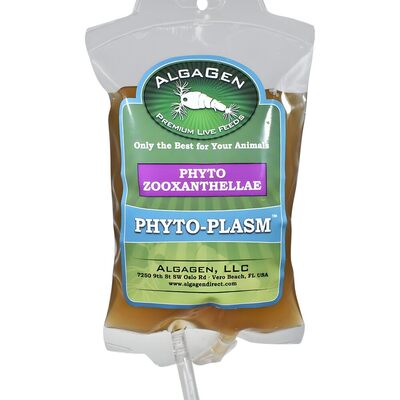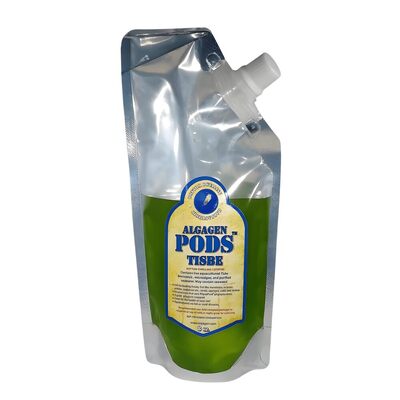Maintaining a vibrant and healthy aquarium requires attention to the minor details, including the tiny organisms supporting the ecosystem. Rotifers, microscopic aquatic creatures, play a vital role in this environment. Their wheel-like cilia, which they use for feeding and moving, make them an essential live food source for fish larvae and small invertebrates. Understanding where to find rotifers is crucial for any aquarist looking to enhance their tank's biodiversity and support the growth of young fish. This article explores various sources of rotifers, their benefits, and how to integrate them into your aquarium effectively.
Understanding Rotifers
What Are Rotifers?
Rotifers are minuscule, multicellular organisms typically found in freshwater and marine environments. They belong to the species Rotifera and range from 50 to 500 micrometers in size. Rotifers are easily recognized by their rotating, wheel-like cilia at their front end, which they use to create water currents that draw food particles into their mouths. These efficient filter feeders consume algae, bacteria, and organic particles, making them a valuable part of the aquatic food web.
The Importance of Rotifers in Aquariums
In aquariums, rotifers serve as a high-quality live food source, particularly for fish larvae and small invertebrates. Their high protein content and essential fatty acids support rapid growth and healthy development. Additionally, rotifers help maintain water quality by feeding on excess algae and organic matter, contributing to a stable and balanced ecosystem.
Benefits of Adding Rotifers to Your Aquarium
1. High Nutritional Value
Rotifers are packed with essential nutrients, including proteins, lipids, and vitamins, which are crucial for the growth and development of fish larvae and fry. Their small size and easy digestibility make them an ideal first food for newly hatched fish, ensuring they receive the necessary nutrients for healthy growth.
2. Promoting Natural Feeding Behaviors
Introducing live rotifers into your aquarium stimulates natural foraging and hunting behaviors in fish and invertebrates. The movement of live rotifers encourages your tank inhabitants to hunt actively, keeping them engaged and promoting overall health and well-being.
3. Enhancing Water Quality
Rotifers contribute to maintaining water quality by consuming suspended organic matter and microalgae. Their presence helps prevent algae build-up and reduces organic waste levels in the tank, leading to more transparent water and a healthier environment for your fish.
4. Supporting Breeding and Growth
Rotifers are indispensable for aquarists focused on breeding. They provide a consistent, nutrient-rich food source for fish larvae, increasing survival rates and promoting faster growth. Incorporating rotifers into your breeding program can lead to more successful spawning and healthier offspring.
Where to Find Rotifers
Finding a reliable source of rotifers is essential for maintaining a thriving aquarium. Here are some of the best places to find rotifers:
1. Aquarium Supply Stores
Specialized aquarium supply stores often offer live rotifers as individual cultures or as part of a mixed live food package. These stores typically ensure that their rotifers are free from contaminants and are suitable for aquarium use. Visiting a local aquarium shop provides access to high-quality rotifers and expert advice on introducing and maintaining them in your tank.
2. Online Retailers
Online retailers are a convenient source for purchasing live rotifers. Numerous websites specialize in providing live cultures for aquariums and offer various rotifer species. Choose a reputable retailer that delivers healthy, active cultures when purchasing online such as algagendirect.com.
3. Local Fish Clubs and Forums
Aquarium hobbyist communities, such as local fish clubs and online forums, can be excellent resources for finding rotifers. Members often share cultures or know where to purchase them locally. Joining a community provides valuable insights and connections, helping you source rotifers and learn from the experiences of other aquarists.
4. DIY Culturing
Culturing rotifers at home is a viable option for aquarists who prefer a hands-on approach. By starting with a small initial culture, you can grow and maintain your supply of rotifers. This method requires some setup and maintenance but offers a consistent and fresh supply of live food. Here's how to start your own rotifer culture:
- Initial Culture: Purchase a starter culture from an aquarium supply store or online retailer.
- Culture Tank: Use a small tank or container with aeration to keep the water oxygenated and the rotifers in motion.
- Feeding: Rotifers feed on microalgae or commercially available rotifer feeds. Provide a steady supply of food to maintain a healthy and growing population.
-
Maintenance: Regularly clean the culture tank and monitor water quality. Harvest rotifers as needed to prevent overpopulation.
5. Pet Stores with Aquatic Sections
Some larger pet stores with dedicated aquatic sections may also carry live rotifers or can order them for you. While their selection might not be as extensive as specialized aquarium stores, these stores can still be a convenient option for sourcing rotifers.
Tips for Incorporating Rotifers into Your Aquarium
1. Proper Acclimation
Before adding rotifers to your tank, acclimate them to the aquarium's water conditions. Gradually mix the tank water with the culture water over an hour or two to reduce stress and ensure the rotifers adapt successfully to their new environment.
2. Feeding Strategies
Introduce rotifers directly into the tank where your fish are most active to ensure they are consumed quickly. Monitor the quantity of rotifers added and adjust based on the feeding response of your tank inhabitants. Avoid overfeeding to maintain water quality.
3. Maintaining Rotifer Populations
Consider setting up a refugium or a separate breeding area for a continuous supply of rotifers in your tank. This space allows rotifers to reproduce without being constantly preyed upon, ensuring a steady supply of live food for your aquarium.
4. Monitoring Tank Conditions
Regularly check your tank's water parameters to ensure they remain stable. Rotifers thrive in well-maintained environments, and their health can indicate the overall water quality in your aquarium.
Advanced Tips for Managing Rotifers
1. Regular Culturing and Harvesting
To maintain a steady supply of live rotifers, especially in a high-demand tank, support a culture and regularly harvest from it. This approach requires monitoring the culture's health and productivity, ensuring it has enough food, and preventing overpopulation.
2. Enhancing Rotifer Reproduction
Rotifer populations can be boosted by optimizing their environmental conditions. Maintain stable temperature and salinity levels suited to the specific rotifer species you are culturing. Regularly add fresh feed and perform partial water changes to keep the culture clean and productive.
3. Dealing with Contaminants
Culturing rotifers can sometimes lead to the growth of unwanted bacteria or protozoa that can contaminate the culture. To minimize this risk:
- Maintain Cleanliness: Regularly clean the culture tank or container to remove waste and prevent the build-up of harmful organisms.
- Use Fresh Water: Use dechlorinated or filtered water to reduce the introduction of contaminants.
-
Isolate Cultures: Keep rotifer cultures separate from other live foods to prevent cross-contamination.
4. Selecting Rotifer Species
Different species of rotifers have unique benefits and requirements. For example, Brachionus plicatilis (commonly known as the saltwater rotifer) is widely used in marine aquaculture due to its adaptability and nutritional value. Freshwater species, such as Brachionus calyciflorus, are ideal for freshwater aquariums. Choose the species that best suits your tank's environment and the dietary needs of your inhabitants.
5. Engaging with Aquarium Communities
Aquarium clubs and online forums can be invaluable resources for finding rotifers and gaining insights from fellow aquarists. Engaging with these communities can help you find local sources of rotifers, share culturing techniques, and learn from others' experiences. Some members might even offer or trade rotifer cultures, providing an opportunity to expand your live food repertoire.
Conclusion
Knowing where to find rotifers and how to integrate them into your aquarium can significantly enhance the health and vitality of your tank. Whether you source them from aquarium supply stores, online retailers, or local clubs or culture them yourself, rotifers provide a prosperous, natural food source supporting your fish's and invertebrates' growth and well-being.
By incorporating rotifers into your aquarium, you boost the nutritional intake of your tank inhabitants and contribute to a more dynamic and balanced ecosystem. With proper care and attention, these tiny organisms can become indispensable to your aquarium, promoting healthier fish, improved water quality, and successful breeding programs.
Explore the various sources and techniques for incorporating rotifers into your setup, and enjoy the benefits of a thriving and vibrant aquarium. Whether you are a novice or an experienced aquarist, rotifers are a valuable addition that can significantly improve your aquatic environment's overall health and sustainability.





Recent post